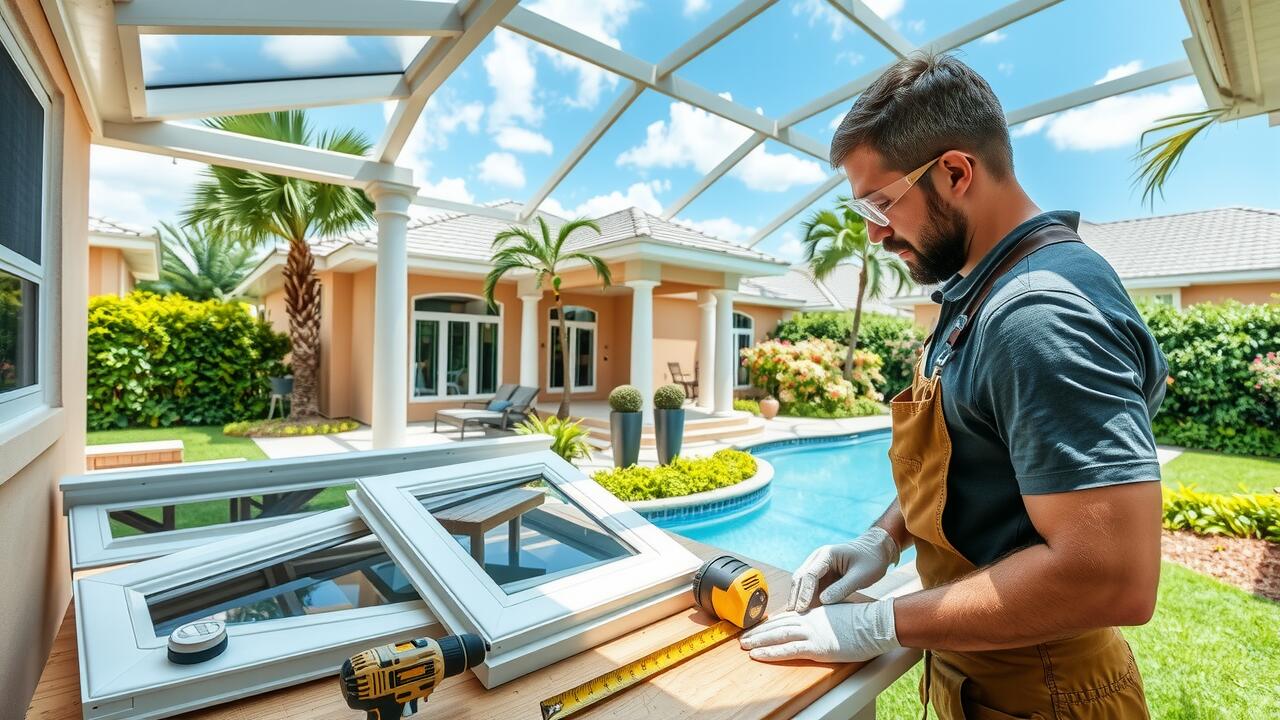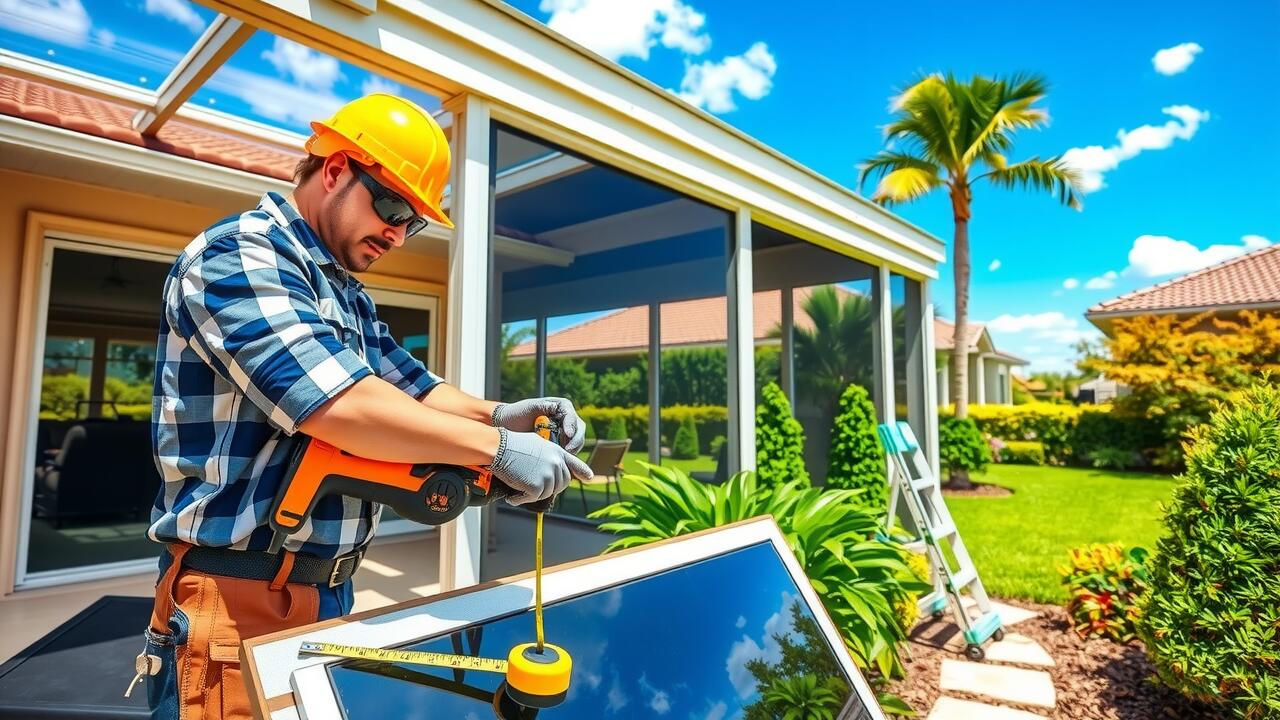
Building Codes and Regulations
When constructing a lanai, it is crucial to be aware of local building codes and regulations that govern outdoor structures. These codes can vary significantly from one municipality to another. Designers and homeowners should ensure compliance with safety standards, zoning laws, and permissible design features. Many regions enforce regulations related to materials, structural integrity, and environmental impact, which may affect the overall design of the lanai. Adhering to these requirements not only ensures safety but also enhances the value of the property.
Lanai enclosures often require specific permits, especially if they include electrical or plumbing components. This can add an additional layer of complexity for homeowners planning to integrate these features into their designs. Working with trained professionals such as contractors or architects familiar with local codes can help navigate these processes effectively. Compliance with regulations concerning lanai enclosures serves to protect both the homeowners and the surrounding community. Proper planning and understanding of these guidelines can result in a successful addition that meets legal standards while providing a comfortable outdoor living space.
Minimum Size Requirements
The minimum size for a lanai often depends on local building codes and the intended use of the space. Many regulations suggest that a lanai should be at least 100 square feet to ensure sufficient space for movement and furnishings. Smaller enclosures may not provide adequate room for activities such as dining, lounging, or entertaining. Every homeowner should consider their individual needs when determining the appropriate size for their lanai.
Lanai enclosures must also account for accessibility. Different designs can influence usable space, and incorporating features like wide openings or wheelchair-accessible pathways is essential. In addition, the layout within the lanai should allow for a natural flow, accommodating not just furniture but also any landscaping that may enhance the overall environment. Proper planning will ensure that the lanai remains functional and inviting.
Suitable Furniture for a Lanai
Selecting the right furniture for a lanai begins with understanding the available space and desired usage. Weather-resistant materials are essential, as lanai enclosures often expose furnishings to the elements. Popular choices include aluminum, teak, and synthetic wicker, all of which withstand humidity and rain. Comfortable seating is crucial, whether it’s lounge chairs for relaxation or dining sets for meals. Each piece should complement the overall aesthetic of the lanai while maintaining functionality.
In addition to durability, aesthetics play a key role in furniture selection. Brightly colored cushions and decorative throws can add vibrancy to the enclosed space. Side tables or coffee tables offer functionality and create a cozy gathering area. Therefore, incorporating greenery, such as potted plants, can enhance the ambiance while seamlessly blending with the lanai enclosures. Thoughtful placement of furniture can also improve traffic flow and overall comfort, making the lanai a welcoming extension of the home.
Considerations for Space and Comfort
When designing a lanai, the arrangement of space significantly influences comfort levels. Choosing furniture that complements the lanai’s dimensions is crucial. Oversized pieces can make the area feel cramped, while minimalist selections may leave it feeling too empty. It’s essential to strike a balance, incorporating seating options that invite relaxation without overwhelming the space. Incorporating Lanai Enclosures can enhance privacy and provide a cozy ambiance, further contributing to a comfortable atmosphere.
When considering comfort, the convenience of access and flow should also be taken into account. Allowing enough room for movement between furniture and outdoor features is important. Moreover, incorporating features like adjustable shade can protect against direct sunlight. Integrating Lanai Enclosures not only boosts aesthetics but also helps maintain a suitable temperature inside, allowing for year-round enjoyment. Attention to these details ensures that the lanai serves as a serene retreat rather than just an extension of the home.
Landscaping Around a Lanai
Landscaping around a lanai can significantly enhance its aesthetic appeal and functionality. Choosing the right plants is vital. Opt for native or drought-resistant species that can withstand local weather conditions. These varieties often require less maintenance and create a more harmonious look with the surrounding environment. Incorporating pathways or seating areas made from natural materials can also help to seamlessly integrate the lanai with the garden.
In addition to plant selection, consider the design of lanai enclosures. These structures not only provide shelter but can also be adorned with climbing plants like vines or hanging flowers. Adding decorative elements such as garden art or outdoor lighting can further elevate the space. Thoughtful landscaping can create a relaxing atmosphere, making the lanai an inviting retreat for homeowners.
Enhancing the Environment
Landscaping around a lanai can significantly enhance the overall environment, creating a seamless transition between indoor and outdoor spaces. Strategic placement of plants, trees, and shrubs can provide privacy while adding vibrant colors and textures. Consider using native plants that thrive in the local climate, as they require less maintenance and water. Incorporating elements such as flower beds or climbing vines not only beautifies the area but also attracts beneficial wildlife like butterflies and birds.
Lanai enclosures further elevate the outdoor experience by allowing homeowners to enjoy the natural surroundings while being protected from pests and unpredictable weather. Screens can provide ventilation, keeping the space cool without compromising the view. Adding features like outdoor lighting or decorative stones can create a welcoming atmosphere. With thoughtful design choices, a lanai can become an inviting oasis, perfect for relaxation or entertaining guests.
FAQS
What is a lanai?
A lanai is a type of porch or veranda that is typically found in tropical or subtropical regions, primarily in Hawaii. It usually features a roof and may have open or screened sides to protect against insects while allowing for ventilation.
What is the average size of a lanai?
The average size of a lanai can vary significantly based on individual preferences and home designs, but it typically ranges from 200 to 400 square feet.
Are there minimum size requirements for building a lanai?
Yes, minimum size requirements for a lanai can vary by local building codes and regulations. Generally, a minimum of around 100 square feet is suggested to ensure enough space for furniture and movement.
What type of furniture is suitable for a lanai?
Suitable furniture for a lanai includes outdoor seating like chairs and sofas, dining tables, and lounge chairs. It’s important to choose weather-resistant materials to withstand the outdoor elements.
How can I enhance the landscaping around my lanai?
To enhance the landscaping around your lanai, consider adding potted plants, shrubs, or flowers that complement your outdoor space. Incorporating pathways or decorative stones can also create an inviting atmosphere.
